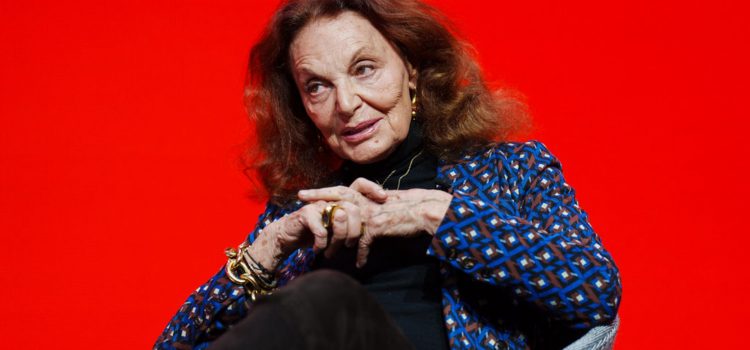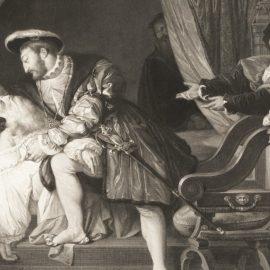
How did Diane von Fürstenberg get into fashion? Why does the designer encourage people to accept their age?
In an episode of Wiser Than Me, Julia Louis-Dreyfus and legendary fashion designer, Diane von Fürstenberg cleanse the rudimentary belief of fashion just being about clothes. She extends this authenticity to her public image, visible in her unfiltered social media pictures.
Let’s take a look at Diane von Fürstenberg’s life story that she tells on Louis-Dreyfus’ podcast.
Why Fashion Is More Than Just Clothing to Diane von Fürstenberg
Diane von Fürstenberg’s life story began long before she became a renowned fashion designer. Belgian-American fashion designer Diane von Fürstenberg, renowned for her iconic wrap dress, has made significant contributions to the fashion industry and women’s empowerment. With her eponymous fashion company available in over 70 countries, she has become a global figure in the world of fashion. Beyond clothing, Fürstenberg recognizes the power of fashion in instilling confidence and self-expression. Her designs have been celebrated for their ability to enhance individual choices regarding appearance and style.
Fürstenberg’s journey is not only marked by professional success but also by personal resilience. Her early years were shaped by her parents’ experiences during World War II. Her mother survived the Holocaust as a member of the Resistance, enduring unimaginable hardships including imprisonment at Auschwitz concentration camp. Despite being told that she should not have children due to her fragile health, Fürstenberg was born against all odds. This testament to life experience highlights the theme of aging as a valuable accumulation of wisdom and strength.
Louis-Dreyfus reflects on the power of fashion she learned during her childhood, instilling her with confidence. A noteworthy part of the discussion revolves around Diane’s views on life and death. She considers life as a journey and perceives death as its ultimate endpoint.
Furthermore, when asked about any advice she would give to her 21-year-old self or any possible do-overs, Louis-Dreyfus asserts that she lives life without regrets. She expresses her belief that regrets only emerge from missed opportunities.
Louis-Dreyfus and Fürstenberg cleanse the rudimentary belief of fashion just being about clothes. Diane advocates for key wardrobe items such as a classic black turtleneck. She emphasizes intentions over fashion choices and encourages authenticity and comfort over forced attempts to appear sexy.
Fürstenberg extends this authenticity to her public image, visible in her unfiltered social media pictures. Louis-Dreyfus reflects on the power of fashion she learned during her childhood, which instilled her with confidence.
She seeks Diane’s advice on choosing age-appropriate fashion and recounts a personal instance of uncertainty over buying culottes. Diane concurs, emphasizing the importance of designing clothes that reflect and bolster the personality of the wearer.
A New Perspective on Aging
An insightful discussion on aging presents a unique perspective. Fürstenberg views aging as a testament to life experience and frames it as living rather than decaying. She suggests that inquiries about someone’s age should be reframed to questions about their life span.
Diane provides context to her views by revealing significant milestones in her personal journey such as starting a family and running a successful business, accomplished before turning 30.
Her advocacy goes beyond mere discussions; she advises women to be authentic and embrace age-appropriate fashion with comfort and genuineness.
Fürstenberg on Her Appearance and Plastic Surgery
The podcast’s intense discourse on societal judgments about appearance and plastic surgery reveals acceptance of individual choices. Fürstenberg exhibits a personal preference for natural appearances that reflect life’s journey.
In a unique twist, both Fürstenberg and Louis-Dreyfus confess to a shared desire to age during their younger years, valuing the maturity and life experience that comes with aging. Diane candidly acknowledges the contrast between her self-perception and her representation in photographs, bringing another dimension into the discussion about appearance and self-perception.
Meanwhile, Julia shares her aspiration to age gracefully.
Challenges and Triumphs: Fürstenberg’s Personal Stories
Fürstenberg opens up about her personal life, including her unexpected early successes and the struggles that ensued. These struggles even involved financial difficulties, a side of her journey much less talked about.
She addresses her past economic challenges, signaling that she had to face financial issues even after an initial burst of fame. Meanwhile, she firmly stands by the belief in treating every setback as a learning experience that informs future decisions and eventually becomes an interesting anecdote.
Unique to Fürstenberg’s perspective, she doesn’t consider herself an exceptional businesswoman, rather, she views herself as an effective person who manifests, with a knack for making her thoughts become realities.
Context
In addition to embracing personal growth and self-acceptance, Fürstenberg emphasizes coping strategies for dealing with stress and setbacks. She encourages individuals to view challenges as learning experiences rather than obstacles that define them negatively. As society continues to grapple with body image issues and societal expectations, Fürstenberg’s work prompts us to examine our own perceptions of beauty and aging while promoting acceptance of diverse appearances.
Looking ahead, it is expected that the fashion industry will continue evolving with an increased focus on sustainability and inclusivity. Society’s perception of aging may shift towards greater acceptance and appreciation for diverse experiences and appearances.






